There are 67 species of Creeping phlox (Moss phlox, mountain phlox, moss pink). Many of them originated in North America, and you will find a unique type for your garden for sure. Their beautiful white, lavender, pink, rose, red, purple, blue, or variegated star-shaped flowers are densely packed all over the stems.
The mature size of these plants may vary, but most of them reach 6 inches (15 cm) in height. You can find them growing even in stone walls. However, they will look fantastic as a part of your rock garden or ground cover for the bare parts of the yard. Plus, fragrant blooming attracts butterflies, making this plant an excellent choice for your butterfly garden.
Varieties of Creeping Phlox
Whichever variety to grow, you can’t go wrong with Creeping phlox. However, there are a few best options you have if you decide to plant this species in your garden.
Low-growing varieties
-
Phlox subulata
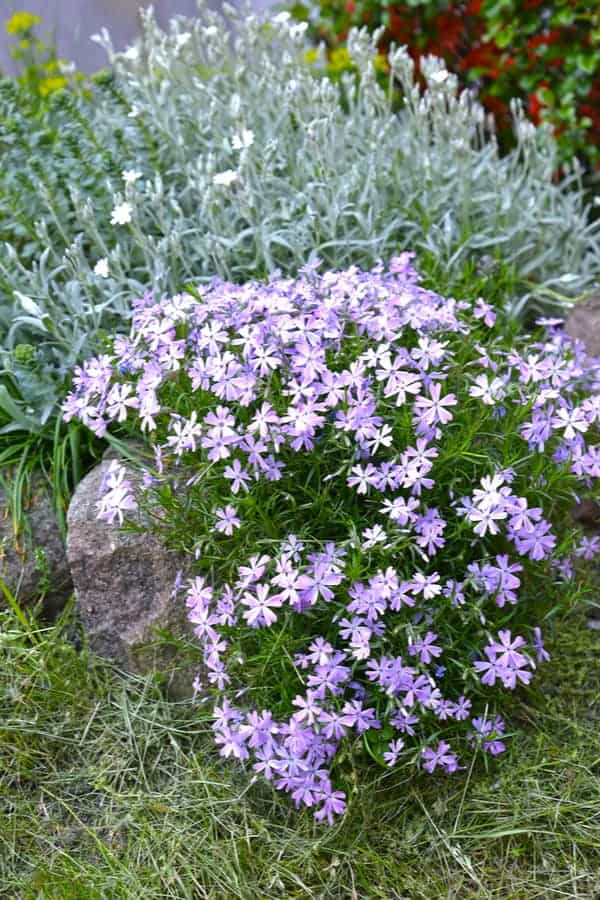
This low-growing species originating in the US is an ideal choice for forming a ground cover. It grows in 4 to 6 inches (10 – 15 cm) thick mounds, turning into a 20 inches (51 cm) wide ‘carpet’ of bright colors in spring.
You will enjoy five-petaled, white, rose, pink, mauve, or blue flowers blooming from late spring to summer. In fact, there will be so many blooms that you will barely manage to see the needle-shaped leaves among them. If you let your plant to grow over a wall, you will get a magnificent waterfall of colors.
The most popular varieties of Phlox subulata are Candy Stripe, with striped, pink-and-white flowers, or Emerald Blue blooming lilac-blue.
-
Phlox stolonifera
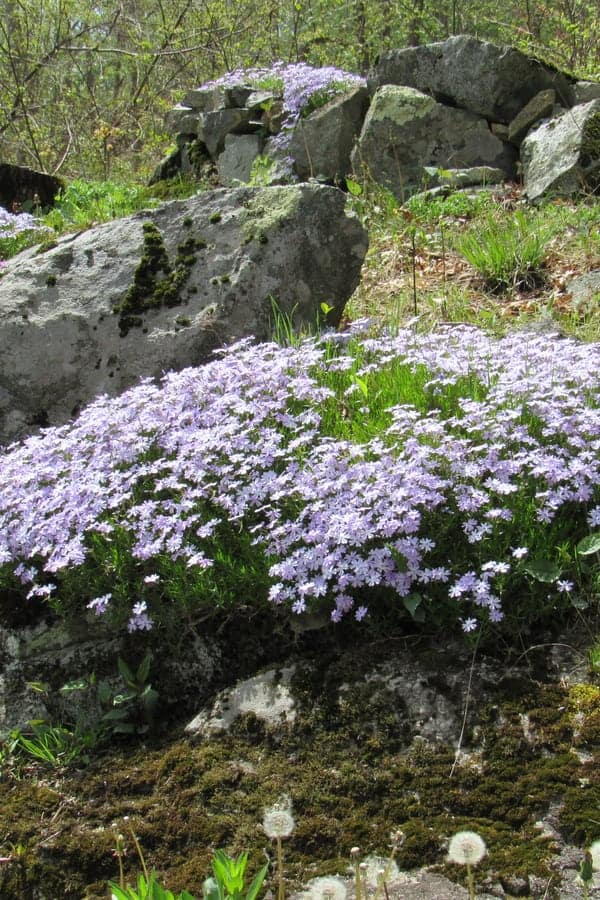
This is a variety with flowers flourishing on stems 6 to 10 inches (15 – 25 cm) tall, above the lush, oval-shaped leaves. Blooms can be white, pale purple, or pink, usually 0.8 to 1 inch (2 – 2.5 cm) in diameter.
This herbaceous perennial is native to Appalachian Mountains’ woodlands in the US and Canada. My favorite one is delicate Sherwood purple with lovely purplish-pink flowers.
-
Phlox divaricata
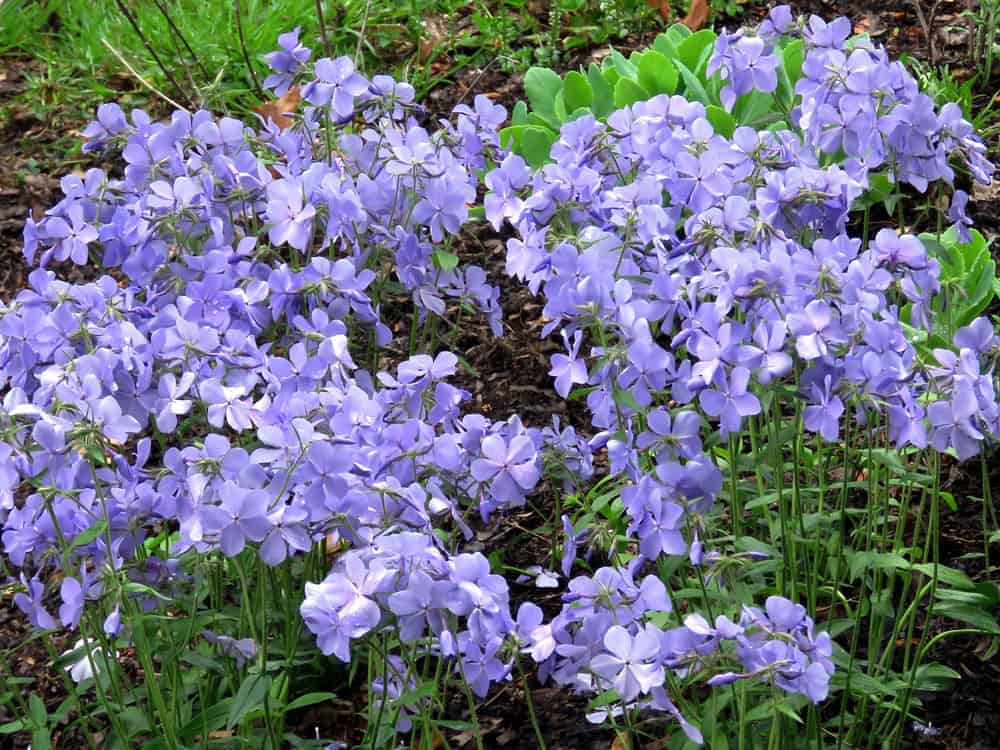
Well-known as Woodland phlox variation, this plant grows in partial or even full shade. You will enjoy bluish blooms from early spring if you provide moist and fertile soil for your plant. Flowers are arranged on 20 inches (30.5 cm) tall stems above the foliage. Choose ‘Blue moon’ or ‘Chattahoochee’ if you like bluish-violet flowers.
Medium-height variety
-
Phlox drummondii
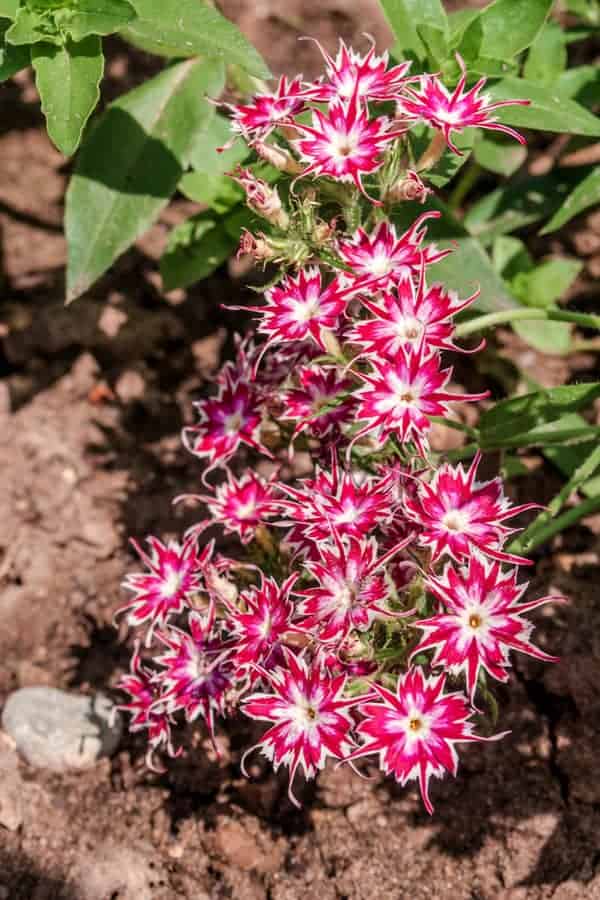
So-called Drummond’s or Annual phlox can rarely grow more than 24 inches (61 cm) in height. It is usually not a heat-tolerant plant, but you can find hybrids thriving on the higher temperatures in warmer regions.
Tall variety
-
Phlox paniculata
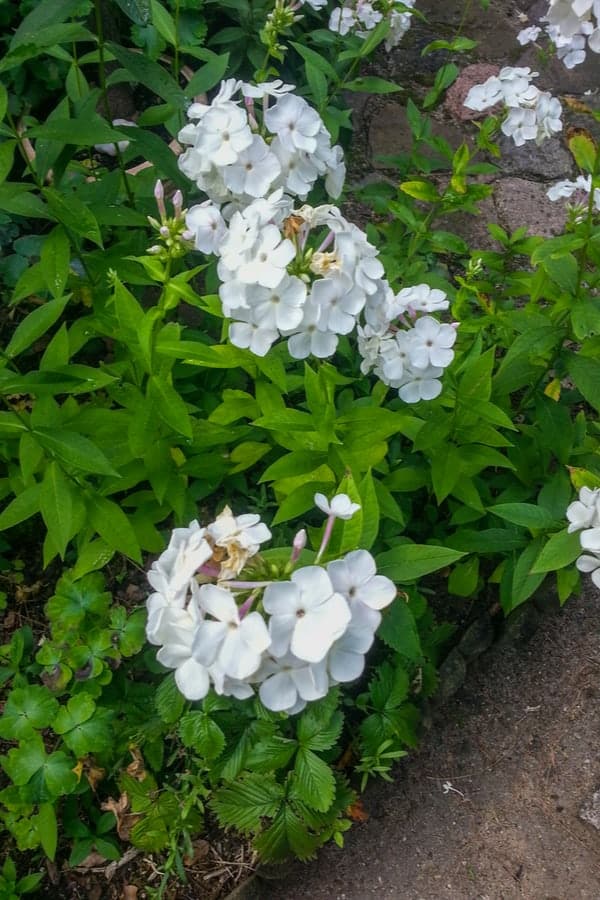
Garden (summer) phlox is the tallest variety you can find on the market. It grows in 3 to 5 feet (91.5 cm – 1.5 m) height clumps. You can expect to see its beautiful panicles of flowers in the second half of the summer.
Gardeners like growing this plant since it is hardy variety thriving and flourishing in full sun. Be careful because it can be too sensitive to powdery mildew.
However, there are two types resistant to this fungal disease, white flowering ‘David’ and ‘Jeana’ producing petite purplish blooms.
Other varieties

Besides your beloved Creeping phlox, there are a few exotic species you may grow in your garden:
- Carolina phlox (Phlox carolina) – You will adore lavender to pink flowers of this 24 to 30 inches (61 – 76 cm) tall plant.
- Meadow phlox, Spotted phlox (Phlox maculata) – This 2 to 3 feet (61 – 91.5 cm) tall plant blooms from August to October and produces pinkish-purple flowers.
- Sand phlox (Phlox bifida) – White to pale blue flowers arranged on a 3 – 6 inches (91.5 cm – 1.8 m) tall stems will start blooming in May.
How to Plant Creeping Phlox in Your Garden
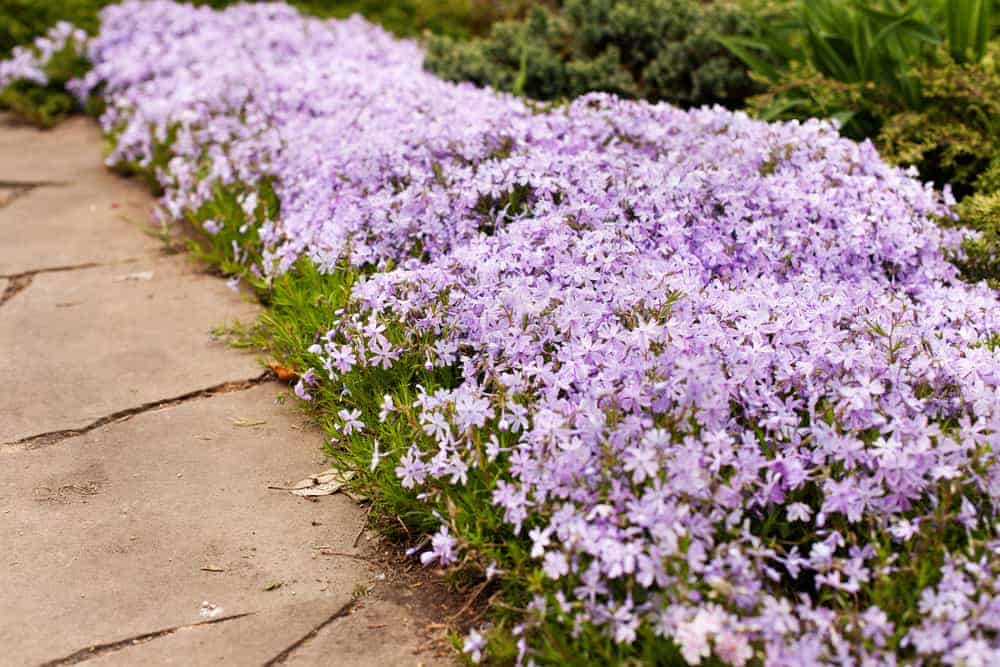
Propagating by division
If you choose this way of propagation your flowers, you should start with the job in spring, after your Creeping phlox finishes flourishing. In general, you should divide your plant once every two to three years.
Dig up the stem along with the root balls and cut them roughly in half. Be careful not to damage exposed roots. Then use a garden fork and prepare the place adequately by loosening the soil to the depth of approximately 12 to 15 inches (30.5 – 38 cm).
It is recommended to add a 2 to 4 inches (5 – 10 cm) thick layer of compost in a hole. After preparing the place, it is the time to begin planting each piece upright in separate holes. The best option is to plant one stem per hole, which is slightly wider than the root ball.
Water abundantly and fill the hole with enough soil. Some species will thrive better if you add a 2 inches (5 cm) thick layer of mulch around new plants.
Propagating by stem cuttings
The second way to propagate your Creeping phlox is by using cuttings. Cut 4 to 6 inches (10 – 15 cm) long healthy stems from the parent plant in late summer or autumn. Take care to cut them about 0.5 inches (1.3 cm) below leaves. Choose just those without flowers.
It is an excellent idea to dip the bottoms of stems in a rooting hormone, to make rooting easier. Also, plant them in a growing medium. It should be well-drained and adequately moist. I have an excellent experience with a mix of peat, coarse sand, and perlite.
Propagation by seeds
There is a possibility to propagate this plant by sowing seeds. However, most gardeners avoid this way because it takes too much time and effort often with an uncertain outcome.
How to Care Creeping Phlox
Space
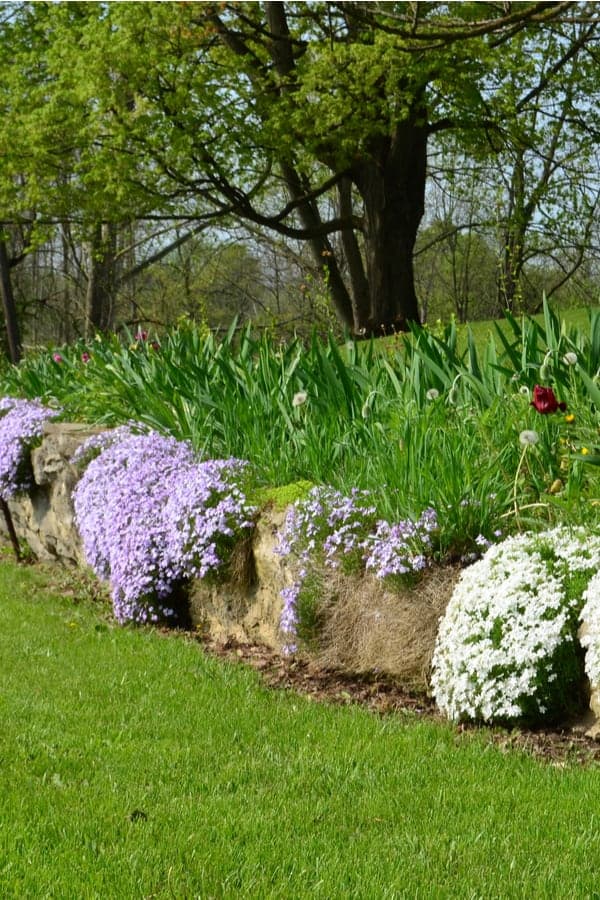
When planting a bunch of beautiful Creeping phloxes in your garden, you should provide at least 15 to 18 inches (38 – 46 cm) space between them. Always keep in mind that your plants will fill the area more quickly if you plant them closer. Therefore, it is better to provide enough space for each plant from the very beginning.
Soil
Provide the moist, alkaline, and well-drained soil, preferably humus, for your plant, and it will grow healthy and vigorous. If the ground is not adequately drained, you should add some vermiculite or perlite to improve it.
However, Creeping phlox does well even in the clay or sandy soil. An ideal pH for this plant is in a range from 6.0 to 8.0.
Light

Creeping phlox does well in full sun, and you should try to provide about six hours of full sun for your plant a day for most types. However, many woodland varieties prefer growing in partial shade, especially during the hottest days in summer. The best solution for this flower growing in a pot is to face it in a southerly direction.
Temperatures
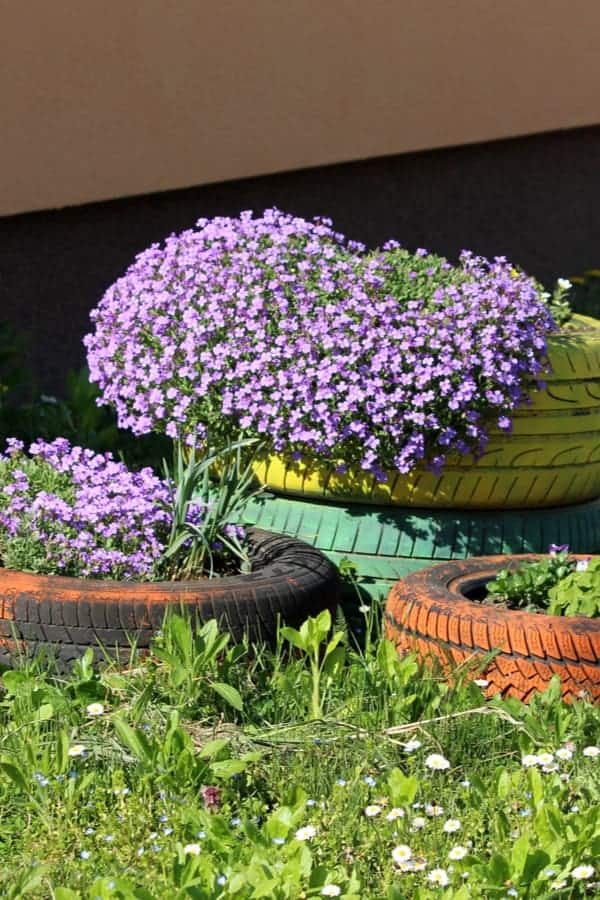
Creeping phlox grows well when the temperatures are in a range from 40 to 85 F (4.5 – 29.5 C). The best period for blooming is when the temperatures are around 60 F (15.5 C), but keep in mind that this plant won’t thrive in regions with extreme temperature fluctuations.
Watering
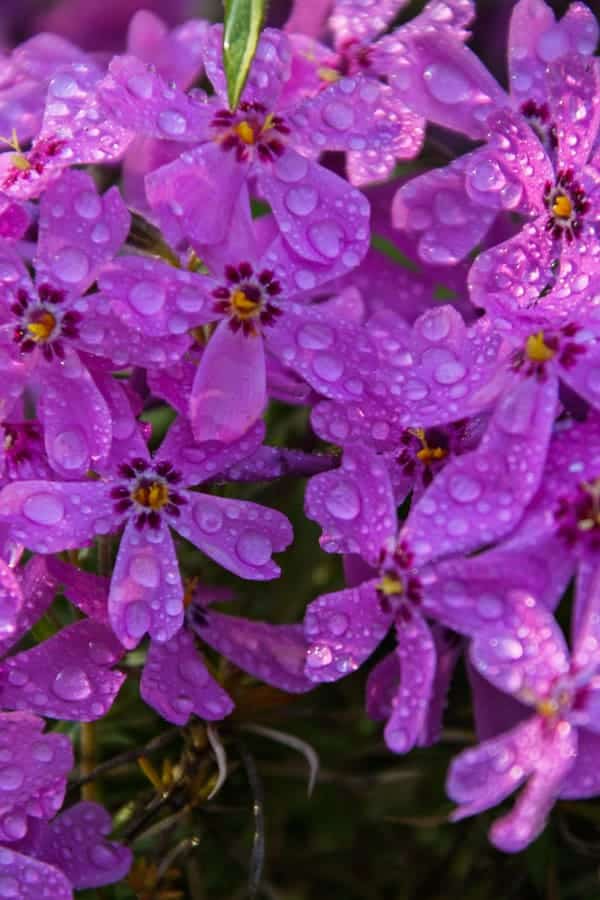
Soak the soil after planting, at least 6 inches (15 cm) deep. There is no need to water your plant daily even during the first growing season. Do it just if the days are too hot without rainfall during the extended period.
Once your Creeping phlox is established, you should provide about 1 inch (2.5 cm) of water a week for it. Your plant may need more water during hot days in summer, but avoid overwatering during winter.
Water your lovely flower at the base of the stem to prevent the occurrence of fungal diseases. Deep soaking from time to time is always a better option than daily sprinkling. Therefore, you should install a drip irrigation system if it is possible, and water your plant early in the morning.
Fertilizing
Creeping phlox may grow without fertilizing, but adding aged manure, or compost in spring is always helpful. However, you should be careful. Using an excessive amount of chemical fertilizer may cause the appearance of leggy stems.
Also, a fertilizer high in nitrogen will encourage the growth of leaves instead of lovely flowers you want to see. One of the better solutions is a slow-release granular fertilizer, but you should choose the one which will release nutrients at least 4 to 5 months.
If you grow Creeping phlox in a container, you should feed it with a water-soluble liquid fertilizer in early spring and once more before summer days become too hot.
Mulching
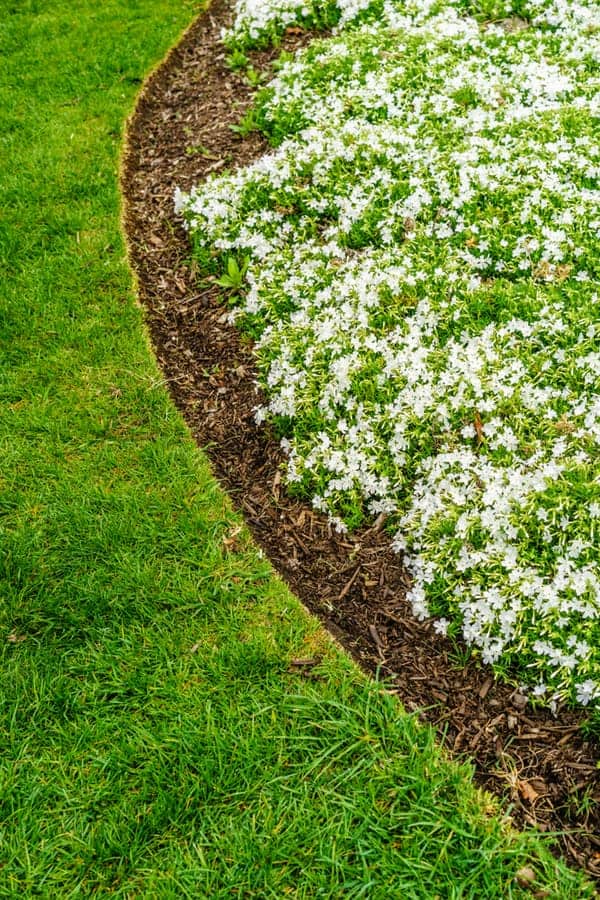
Apply a 2 inches (5 cm) thick layer of mulch around your plant in spring. That is an excellent way to keep the ground modesty moist and your flower safe from weeds.
After pruning your Creeping phlox in fall, place a layer of compost or bark around the stems to protect them of coldness during winter.
Pruning and deadheading
If you provide enough space for free growth, Creeping Phlox won’t require pruning or edging. On the other hand, if you decide to grow it as a border, you should prune the edges hanging over your driveway or sidewalk.
It is recommended to cut damaged and dried stems by half in early spring to encourage bushy growth. Also, you should cut faded blooms with garden shears to help your plant stay vigorous and healthy with abundant flourishing for the following growing season.
Prune tall varieties to about 1 to 2 inches (2.5 – 5 cm) above the ground after the first frost in autumn. One more thing! Every two to three years, you should divide tall Creeping phloxes to prevent diseases due to overcrowding.
Creeping Phlox Pests and Diseases
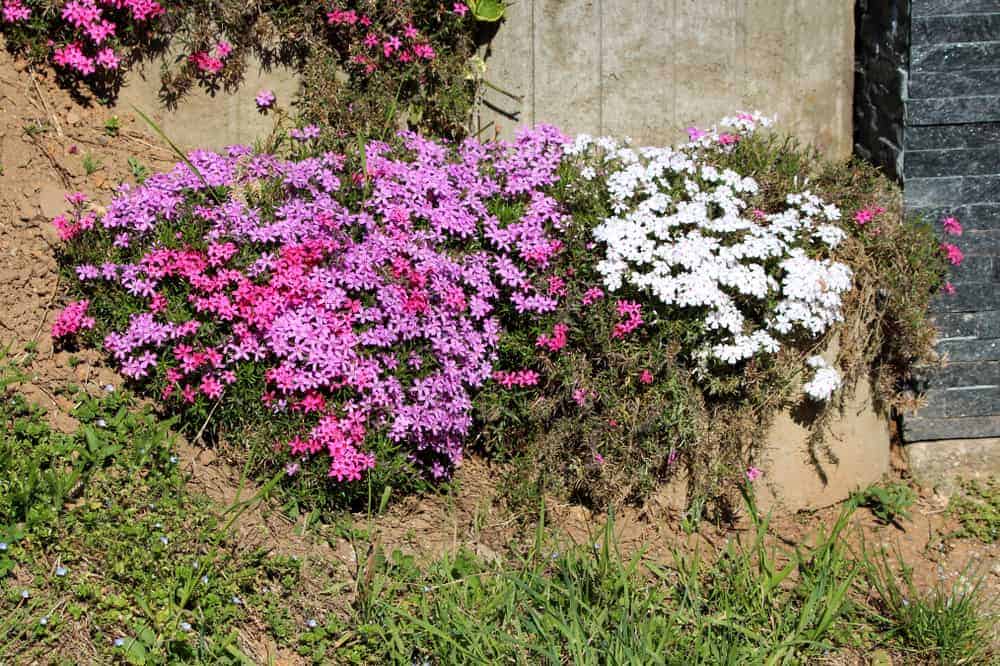
Powdery mildew
Unfortunately, this fungal disease often attacks Creeping phlox, especially when air circulation between plants is not adequate.
Other common reasons can be nutrient deficiencies, improper lighting, insufficient watering, and overuse of chemicals. Use an organic insecticidal soap to get rid of these pests.
Botrytis blight
Parts of your plant will turn brown, usually during cold and rainy spring. If you notice dust-like gray spores on leaves, you will know that you should handle this disease.
Leaf spots
Sometimes, you may spot tan or brown patches on the foliage, especially the older ones. Luckily, these spots are not harmful to your plant.
Crown rot
Creeping phlox is not highly susceptible to this infection. However, if you don’t see young shoots appearing in spring, you can suspect that this disease has occurred on your plant. You will also notice leaves becoming yellow and wilted on black stems.
Solve the problem by improving drainage, cultivating the soil, and spreading mulch around the plant in winter. Remove and throw away infected plants and surrounding ground to prevent additional problems.
Insects
If your Creeping phlox is healthy and vigorous, it can resist to attacks of most insects.
Rabbits
It seems that Creeping phlox is deer-resistant, but rabbits often eat its foliage and flowers. Use traps or make a fence to protect your plant.
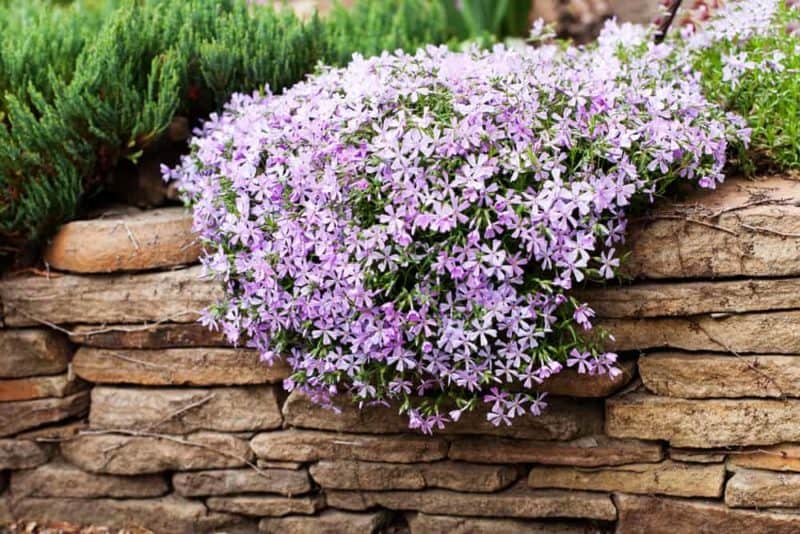
Leave a comment